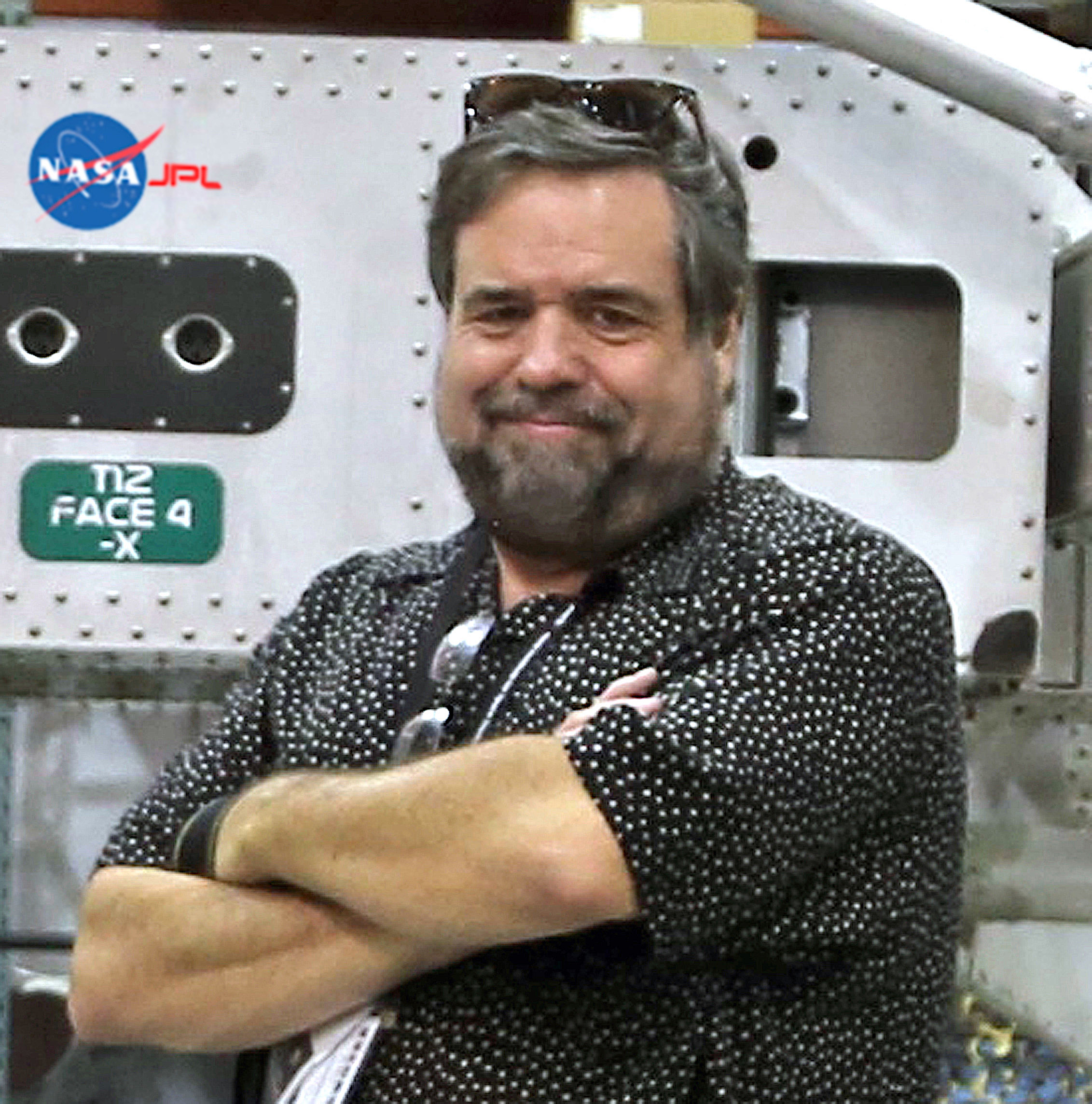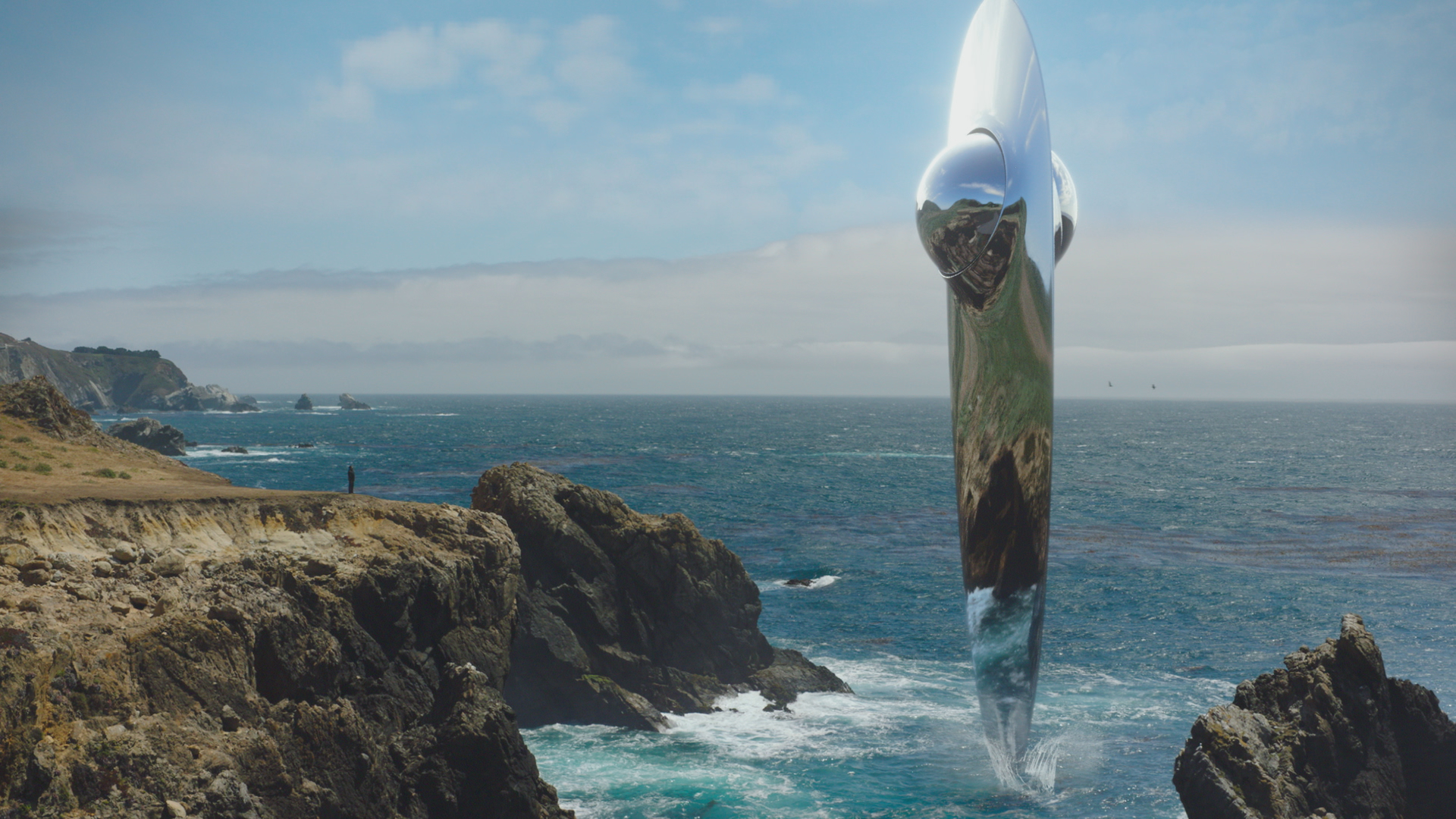'Cosmos: Possible Worlds' episode 1 takes viewers on a wild ride with the Ship of Imagination
Monday (March 9) marked the kickoff of the third season of the venerable "Cosmos" series on the National Geographic channel. It's actually Season 2 of the new show, but the producers count the original 1980 version hosted by Carl Sagan as Season 1.
Now hosted by Neil deGrasse Tyson, "Cosmos: Possible Worlds" begins, as you might expect, with a sweeping overview of humanity's place in the cosmos, the importance of science to both our intellectual development and our survival, and the power of imagination.
The inaugural episode, titled "Ladder to the Stars," opens with Sagan's voice from the original show: "The open road still calls, like a nearly forgotten song of childhood. For all our failings, and despite our limitations and fallibilities, we humans are capable of greatness." These words frame the episode, and the entire series, perfectly.
Related: 'Cosmos: Possible Worlds' takes us back into a universe of science
Tyson then takes over as our guide, teasing us with bits from Season 3 before diving into the core of the episode. He says of the universe, "Science can carry us across that vastness, but without imagination, we go nowhere ... our ship of the imagination is powered by twin engines of skepticism and wonder, the simple set of rules that define science." Here we have a core value of the show: science is important, science is powerful, and reason should overrule superstitious beliefs, whether they be born of religious dogma or governmental indifference.
As before, the silvery throat-lozenge Ship of the Imagination is our vehicle for travels ranging from the microcosm of our world to the deepest reaches of space. We begin our journey in a vast, green field on Earth, then zoom away from our home planet to blast past the Voyager 1 spacecraft, now 13 billion miles (21 billion kilometers) distant, and travel much farther — a billion years into the past — to witness the collision of two black holes, an event that would cause a massive ripple in time and space, providing gravitational waves that would eventually ring Earth like a massive bell and offering scientists new evidence confirming these mysterious cosmic objects.
The cosmic calendar
We then return to the "cosmic calendar," a device from both the previous season and the original series to illustrate the breadth of space and time. Once again, the massive time scale of the universe, and humanity's very brief place in it, becomes a striking visual cornerstone of our exploration.
Breaking space news, the latest updates on rocket launches, skywatching events and more!
With each month representing a billion years, we see the birth of the first scraps of life on Earth in mid-September, cosmic time, about 4 billion years ago. From here we rush forward through time, witnessing evolution and mutation of life on Earth, to Dec. 26. This date represents 200 million years ago — the rise of the mammals — which heralded the beginnings of the neocortex of the mammalian brain, and, as Tyson puts it, the "source of self-esteem," the origins of curiosity and the ability to imagine the future.
As Tyson goes on to examine the tiniest little corner of the cosmic calendar — just a few moments in cosmic time — we see the rise of Homo sapiens and hunter-gatherer societies. And it is here that we begin our look at the human condition — the perfect first installment for the new series.
Related: The problems with the cosmic calendar
The rise of reason
Using the lush visualizations that are a hallmark of the new "Cosmos," we step inside Blombos Cave on the tip of Africa, where all Homo sapiens — only 10,000 strong 100,000 years ago — first expressed themselves with enduring works of art.
From that point, just 25 "cosmic seconds" later, we depart the loose affiliations of hunter-gatherer life — where groups of humans lived, for the most part, harmoniously — and enter the agricultural age, which changes everything. This is the beginning of people settling down, having a notion of "home" — a dwelling surrounded by domesticated crops — and a re-examination of the value of possessions. With possessions and land holdings, naturally, comes the idea of ownership, and then greed.
But this is "Cosmos," a show which shows us a generally optimistic vision of our better selves, and Tyson soon departs for 7000 B.C., to see the first city in history, Çatalhöyük, located in what is today Turkey. This settlement has no city hall, no royal palace and no ruler; it is a model of synergistic simplicity and a study in egalitarianism. As Tyson explores a fascinating and beautiful re-creation of these ancient dwellings, we also see the first maps painted on the interior walls — humans now have an idea of their location with respect to the rest of the city, and their larger surroundings.
The "golden age"
The Ship of Imagination next transports us to Holland in the 17th century, "where people from old and new worlds mingled and shared ideas" with unprecedented freedom of thought, Tyson says.
Cartoon-style animation, another trademark of the renewed "Cosmos," takes us through stories of early scientific figures, like the Italian friar Giordano Bruno, who saw among the starry skies other stars with other worlds, thinking that was considered heretical at the time. A half-century later, the Dutch scientist Christiaan Huygens would revolutionize astronomy by refining telescope design, while Dutch artist Johannes Vermeer changed how painting captured light.
Baruch Spinoza, a radical member of the Jewish refugee community in the Netherlands, claimed at the time that the Bible was written not by God but by humans, and that the reality that surrounded humankind was driven by natural laws, not God's whims. Unfortunately, the Jewish community he lived in was not as embracing of novel thought as the rest of Dutch society, and he was excommunicated — a theme that we see again and again in "Cosmos."
Though Spinoza died young, his writings inspired everything from the American revolution to Albert Einstein, who, when asked about the existence of God, wrote, "I believe in Spinoza's God, who reveals himself in the harmony of all that exists." This lovely phrase could serve as a tagline for the modern iteration of "Cosmos."
Endings ... and a new beginning
The concluding acts of Episode 1 take us through the interdependent evolution of plants and insects, specifically bees, and how they work together to benefit both parties — and ultimately, humanity. When pondering the decline of bees in modern times, we visit the Halls of Extinction to explore the newest branch — the Anthropocene era, also known as "today."
"What is it about us as a species that wherever we go we bring death?" Tyson queries, while looking pensively at a scene of nature preserved before the advent of modern humanity. It's a poignant moment.
"Ladder to the Stars" concludes with a look at the first serious attempt to reconnoiter another star system, the Breakthrough Starshot project. Financed by billionaire Yuri Milner (who is not mentioned in the show), the plan is to send many thousands of tiny micro-probes toward the nearest star system, Proxima Centauri, riding powerful Earth-based laser beams.
The probes should reach about 20% the speed of light, fast enough sling them past the exoplanet orbiting Proxima, Proxima b, which is thought to lie in the star's habitable zone, in about 20 years. The radio signal that will carry data from the revolutionary reconnaissance will take another four years to cross the void. So, within the lifetimes of most of you reading this, we may see the first real images of planet beyond our solar system — and, Spinoza's God willing, the first life-forms anywhere beyond Earth.
Carl would have been proud.
The first two episodes of "Cosmos: Possible Worlds" premiered on March 9 on the National Geographic Channel, and new episodes will air Mondays at 8 p.m. ET/9 p.m. CT. The series is also expected to run on the Fox television network this summer.
- Humanity's journey, from the Big Bang to the present (op-ed)
- 'Cosmos' with Neil deGrasse Tyson returns to Fox, NatGeo Channel
- Neil deGrasse Tyson returning to TV after Fox, NatGeo investigation: report
Follow us on Twitter @Spacedotcom and on Facebook.
OFFER: Save at least 56% with our latest magazine deal!
All About Space magazine takes you on an awe-inspiring journey through our solar system and beyond, from the amazing technology and spacecraft that enables humanity to venture into orbit, to the complexities of space science.

Rod Pyle is an author, journalist, television producer and editor in chief of Ad Astra magazine for the National Space Society. He has written 18 books on space history, exploration and development, including "Space 2.0," "First on the Moon" and "Innovation the NASA Way." He has written for NASA’s Jet Propulsion Laboratory, Caltech, WIRED, Popular Science, Space.com, Live Science, the World Economic Forum and the Library of Congress. Rod co-authored the "Apollo Leadership Experience" for NASA's Johnson Space Center and has produced, directed and written for The History Channel, Discovery Networks and Disney. For more information on the National Space Society, go to nss.org


